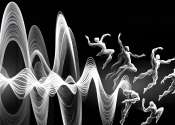Continuous, noninvasive blood pressure monitoring using sound
A wearable blood pressure monitor uses sound to capture a continuous record of the vital sign data. Continuous, noninvasive blood pressure monitoring has been a longtime goal of medicine, given blood pressure's utility as ...
Jul 31, 2024
0
1









